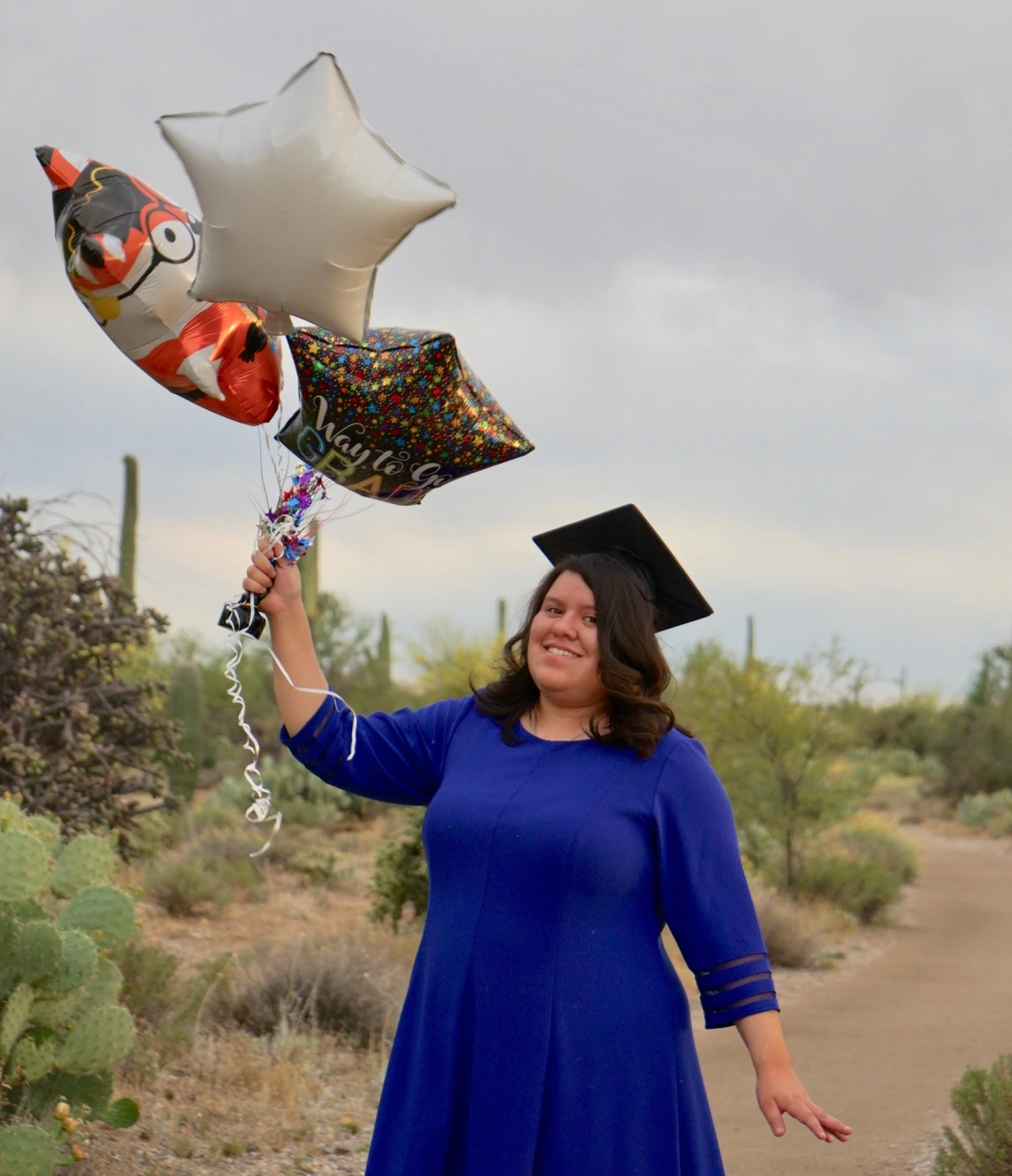PCC Students Thrive in Capstone Program
A pilot partnership with a local community college armed senior design teams with extra expertise and provided opportunities to non-UA students.

Brittany Villegas, who earned her associate’s degree in computer-aided design at Pima Community College in December 2019, worked with a team of UA engineering seniors on a capstone project. The team won the $1,000 Technical Documentation Consultants of Arizona Award for Best Design Documentation at Craig M. Berge Engineering Design Day.
Team 19028 won the $1,000 Technical Documentation Consultants of Arizona Award for Best Design Documentation at the Craig M. Berge Engineering Design Day this year. However, one member of that team was not actually a University of Arizona student.
Almost a year earlier, when Pima Community College announced that the school was launching a partnership with the UA College of Engineering, Brittany Villegas was instantly interested. The prospect of working with a team of student engineers on a project sounded like a great opportunity to Villegas, who was working on an associate’s degree in computer-aided design at PCC. At the Interdisciplinary Capstone Program’s open house event, she was particularly enthusiastic about the biomedical projects sponsored by Roche Tissue Diagnostics.
“I was interested in working for a company like Roche because I want to be somewhere where I know I’m making a difference,” said Villegas, who received her degree from PCC in December 2019.
Roche tasked Villegas and her team with creating a slide randomizer for pathologists. As part of their training, pathologists must perform a test to demonstrate their ability to accurately evaluate stained glass microscope slides. However, setting up the exam involves a series of manual steps, and the company wanted to streamline the process.
“This was my first time actually collaborating with engineers,” said Villegas, who brought the team’s ideas to life through 3D models and blueprints. “I got to see more specifically the way they conduct documentation, and say, ‘Okay, this is the expectation of me. This is the way I should do documentation to be able to help the team best.’”
College mentor Steve Larimore said Villegas’ drawings and solid models were among the best he’s seen in the Interdisciplinary Capstone course. Elizabeth Seader, an engineering management major on the same team, said that Villegas provided valuable help by creating designs in CAD and SolidWorks. They weren’t the only ones who were impressed. Roche offered Villegas an internship in manufacturing operations, but unfortunately had to cancel summer internships due to COVID-19.
“Regardless, being able to put this on my resume shows that I already have a little bit of experience working with a collaborative team and presenting what I can do with a project,” she said. “The whole experience to me was just amazing. The classes were really fascinating, and I want to be able to continue so I can understand more.”
Villegas hopes to attend the UA to study mechanical engineering, possibly with a double major or minor in electrical and computer engineering.
Beyond Theoretical
Craig Wadlington is another PCC student who joined a senior design team this year. Like Villegas, he earned his associate’s — in electro-mechanical design — in December 2019, but he stayed on the project for an extra semester. His team, sponsored by Caterpillar, created a device to measure the flatness of slew rings in hydraulic mining shovels with high speed and accuracy.
Wadlington currently works at local fabrication facility CAID Industries, which partners with engineering companies like Raytheon and Boeing. He said being in Interdisciplinary Capstone taught him more about the different disciplines available within the field, such as systems and industrial engineering. The project also lined up well with his own capstone course at PCC. He could apply what he was learning at UA to his PCC project, and vice versa.
“It’s so beneficial to learn about engineering and actually make something,” he said. “The biggest thing for me was that my designs and drawing had to be real, because they were actually getting made. Everything I’d designed at Pima before was just theoretical. This really pushes you into the real world.”

